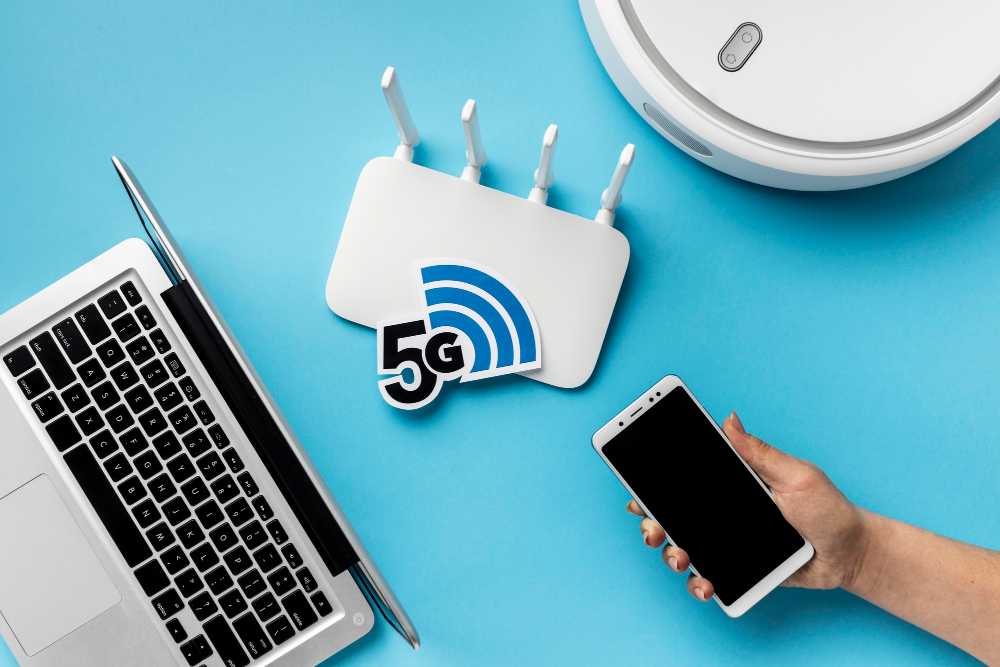In today’s digital age, a strong and reliable Wi-Fi connection is essential for work, streaming, gaming, and staying connected with the world. However, slow internet speeds or poor Wi-Fi signals can be frustrating. The good news is that you don’t need to be a tech wizard to improve your Wi-Fi performance. By following these simple tips, you can boost your Wi-Fi signal and enjoy faster internet speed.
1. Position Your Router Strategically
The placement of your Wi-Fi router plays a significant role in signal strength. Ensure your router is:
- Centrally located in your home to cover all areas equally.
- Elevated, such as on a shelf or mounted on a wall, to avoid signal obstruction by furniture.
- Away from electronic devices like microwaves and cordless phones, which can interfere with the signal.
Pro Tip: If possible, place the router in the room where internet usage is highest.
2. Use the Latest Wi-Fi Technology
Technology evolves quickly, and older routers may not support the speeds provided by your internet service provider. Ensure your router supports:
- Wi-Fi 5 (802.11ac): Suitable for most homes with moderate internet usage.
- Wi-Fi 6 (802.11ax): Ideal for high-speed internet plans and multiple connected devices.
Upgrading to a modern router can significantly enhance your internet speed and overall network performance.
3. Reduce Signal Interference
Interference from other devices and networks can weaken your Wi-Fi signal. Here’s how to minimize interference:
- Change the Wi-Fi Channel: Use your router’s settings to switch to a less congested channel.
- Switch to 5 GHz Frequency Band: If your router supports dual-band, use the 5 GHz frequency for faster speeds over shorter distances.
Pro Tip: Many modern routers offer automatic band steering to select the best frequency for your device.
4. Secure Your Network
An unsecured Wi-Fi network can attract unauthorized users, slowing your connection. Enhance your network security by:
- Setting a strong password with a mix of letters, numbers, and symbols.
- Enabling WPA3 encryption if your router supports it.
- Regularly monitoring connected devices and removing unknown ones.
5. Use a Wi-Fi Extender or Mesh System
If certain areas in your home have weak Wi-Fi signals, consider using:
- Wi-Fi Extenders: These amplify the signal from your router to cover dead zones.
- Mesh Wi-Fi Systems: A more advanced solution that provides consistent coverage throughout your home.
Pro Tip: Choose extenders or mesh systems compatible with your router for seamless integration.
6. Optimize Router Settings
Tweaking your router’s settings can improve its performance:
- Update Firmware: Regular updates can fix bugs and improve speed.
- Enable Quality of Service (QoS): Prioritize bandwidth for specific activities like streaming or gaming.
- Adjust Antennas: If your router has adjustable antennas, position them for optimal coverage.
7. Reduce the Number of Connected Devices
Multiple devices connected to the same network can strain your Wi-Fi. To manage this:
- Disconnect devices not in use.
- Use Ethernet cables for stationary devices like gaming consoles or smart TVs.
- Upgrade your internet plan if you have many connected devices and experience slow speeds.
8. Use Powerline Adapters
For homes with thick walls or large layouts, powerline adapters can be a game-changer. These devices use your home’s electrical wiring to transmit internet signals, providing a strong connection in hard-to-reach areas.
9. Monitor Bandwidth Usage
Certain activities, like downloading large files or streaming in 4K, can consume significant bandwidth. To optimize usage:
- Schedule large downloads during off-peak hours.
- Enable data-saving settings on streaming platforms.
Pro Tip: Use apps like NetLimiter to monitor and control bandwidth usage on your devices.
10. Perform Regular Maintenance
Dust and heat can affect your router’s performance over time. Keep your router in optimal condition by:
- Cleaning it regularly to prevent overheating.
- Restarting it occasionally to clear temporary issues.
- Checking for firmware updates monthly.
11. Invest in a Better Internet Plan
Sometimes, slow internet speeds result from an outdated or insufficient plan. Contact your ISP to explore higher-speed options or packages designed for heavy users.
Pro Tip: Compare internet plans from different providers to find the best deal for your needs.
12. Consider Professional Assistance
If you’ve tried all the tips above and still face issues, it might be time to consult a professional. Many ISPs and tech specialists can evaluate your network and suggest improvements
Boosting your Wi-Fi signal doesn’t have to be complicated or expensive. By making a few adjustments to your setup, investing in modern technology, and maintaining your equipment, you can enjoy faster and more reliable internet speed. Whether you’re streaming your favorite show, working remotely, or gaming online, these tips will ensure a seamless internet experience.







